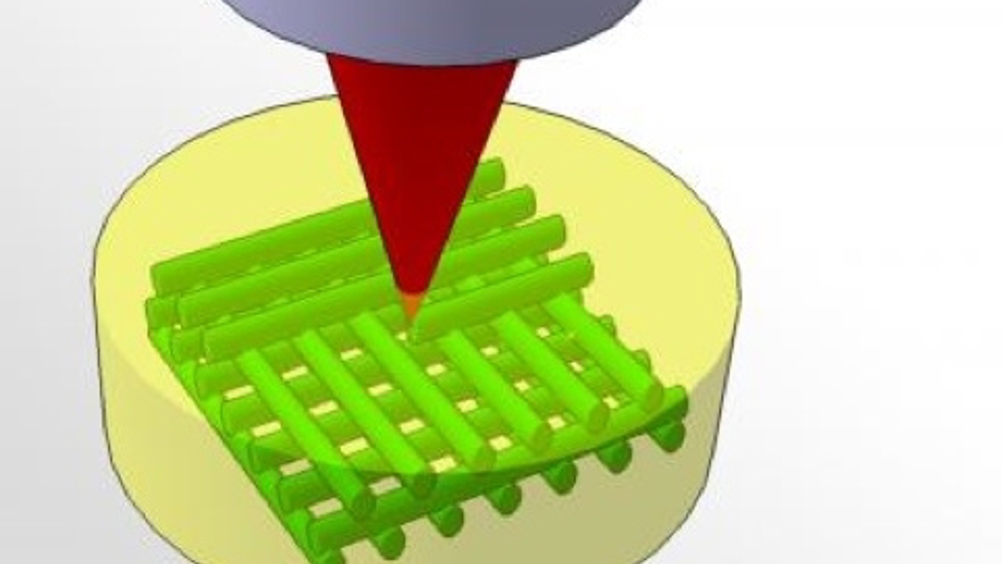Laser-based technique builds 3D micron-scaled structures
Researchers at the Vienna University of Technology have developed a method of building up three-dimensional, micron-scaled structures with tailored chemical or biological properties that could be the basis for complex sensors or even biological systems.

Known as 3D photografting, the system uses a focused laser as a kind of paint brush to set off chemical signals that direct compounds or cells to the chosen point within a block of material.
The researchers are from two teams that have previously worked on 3D printing — one from the university’s materials science department, led by Prof Jürgen Stampfl, and the other from a macromolecular chemistry research group led by Prof Robert Liska.
The technique, however, is not related to 3D printing, but is a development of a method previously used to modify the surface of a polymer.
The team started with a macomolecular hydrogel, a polymeric substance with a very low density whose structure is an open lattice with large pores. They seeded this structure with aromatic azide molecules, then irradiated the hydrogel with a laser focused to a point 4µm across. The light transforms the azide molecules into highly reactive groups onto which specific compounds will attach very quickly.
Register now to continue reading
Thanks for visiting The Engineer. You’ve now reached your monthly limit of news stories. Register for free to unlock unlimited access to all of our news coverage, as well as premium content including opinion, in-depth features and special reports.
Benefits of registering
-
In-depth insights and coverage of key emerging trends
-
Unrestricted access to special reports throughout the year
-
Daily technology news delivered straight to your inbox










Water Sector Talent Exodus Could Cripple The Sector
Maybe if things are essential for the running of a country and we want to pay a fair price we should be running these utilities on a not for profit...